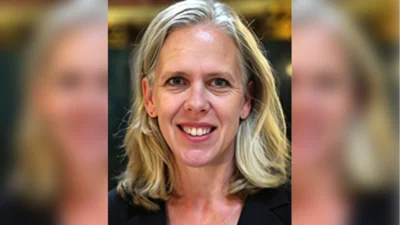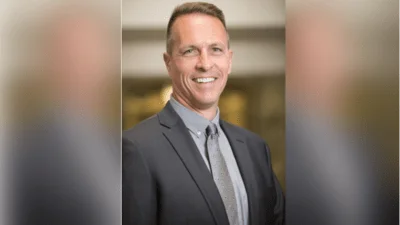Froedtert Hospital issued the following announcement on Jan.10.
During the COVID-19 pandemic, the trauma team at the Froedtert & the Medical College of Wisconsin adult Level I Trauma Center at Froedtert Hospital is treating an unprecedented number of patients for gunshot wounds. Since 2020, gun violence in the city of Milwaukee has been at an all-time high. With no end to the COVID-19 surge in sight, trauma surgeons are calling for heightened community awareness and stronger gun violence prevention efforts.
"The city of Milwaukee can be considered a daily mass shooting scenario in terms of the large numbers of people hurt every day by gun violence,” said David Milia, MD, trauma surgeon and medical director of the Trauma Center. “As a community, we need to react to this everyday violence and do what we can to help prevent it.”
Gun Violence Statistics During the COVID-19 Pandemic
According to the Milwaukee Police Department, between 2019 and 2020, non-fatal shootings increased by 69%, and homicides increased by 96%. In 2021, non-fatal shootings increased by 10% and the homicide rate held steady.
“We see victim after victim of senseless violence,” Dr. Milia said. “We felt the spike in 2020, and it is declaring itself to be the new normal. We all need to react to this and not become used to it.”
These gun violence statistics are not unique to Milwaukee; the rise in violence during the pandemic is a trend in cities across the United States. In fact, national data published by the FBI showed a 30% jump in homicides from 2019 to 2020. It was the first time in four years that violent crime increased and the largest spike since 1960.
A study published in the Journal of the American College of Surgeons looked at the reasons gun injuries increased during the COVID-19 pandemic. Researchers found pandemic distress and ready availability of guns — the number of legally sold guns between March 2020 and August 2020 doubled when compared with the same timeframe in 2019 — are important factors tied to the rise in gun violence. The researchers said suicide-related gun injuries should also be considered, but they acknowledged the lack of focus on suicide in their study due to the difficulty of accessing those statistics.
“If a person is in a moment of crisis, whether that is suicidal or interpersonal, their brain may not be functioning appropriately, and they may be more prone to making impulsive decisions,” said Sara Kohlbeck, MPH, director of the Division of Suicide Prevention at the Medical College of Wisconsin’s Comprehensive Injury Center. “Unfortunately, when a firearm is involved, the chances someone will die are very high, so access to firearms among people in moments of crisis is a huge issue.”
More Gunshot Victims With More Severe Injuries
The rise in gun violence is not only translating to more gunshot victims being treated at the adult Level I Trauma Center at Froedtert Hospital, but also, the victims’ injuries are often more severe. The majority of gunshot patients have a single gunshot wound, but there has been an increase in the number of gunshot patients with multiple injuries.
“We are treating people with an astounding number of injuries, not one or two bullet holes,” Dr. Milia said. “We are regularly seeing victims who have been shot eight, 10, 12 or 15 times.”
When a person with a gunshot wound arrives at the Trauma Center, a dedicated Trauma Center team and emergency medicine doctors on board in the Emergency Department act immediately to assess and stabilize the patient. The role of a trauma surgeon is to stop the bleeding and repair the damage. However, the increased number of severe injuries means more patients are likely to require additional hospital resources, such as operating rooms for surgery and specialty care.
“A bullet is designed to impart as much damage to the tissue it encounters as possible, and we are seeing all of the effects of that,” Dr. Milia said.
The Trauma Center at Froedtert Hospital is the only adult Level I Trauma Center in eastern Wisconsin, and one of two in the state. The “Level I” classification means the highest level of care is available with specialized teams, facilities and equipment, all around-the-clock.
Gun Violence Risks in the Home
Owning a gun comes with inherent risks, particularly when it comes to young people who do not fully understand the lethality of a gun. In homes where guns are present, the chance of an unintentional shooting death is four times higher than in homes that do not have guns. According to the American Academy of Pediatrics, children as young as three may be strong enough to pull the trigger on a handgun. Many unintentional shootings involving children are caused by the child playing with a gun or thinking the gun is not loaded.
Children and adults are at an increased risk for suicide when a gun is in the home. The American Foundation for Suicide Prevention says nearly two thirds of all gun-related deaths in the U.S. are suicides. Gun violence statistics from the Harvard Injury Control Research Center indicate that more than half of people who die by suicide kill themselves with a firearm, and more than 85% of suicide attempts with a gun end in death. Limiting access to guns in the home is the best way to prevent a person in crisis from attempting suicide with a gun.
“Studies have shown that it can take less than 15 seconds for a person to reconsider a decision to end their life,” Kohlbeck said. “If you can put physical distance and time between a person and a firearm by making the firearm more difficult to access, you’re giving a person in crisis time to reconsider their decision. You’re also allowing time for someone to intervene and potentially save their life.”
How To Prevent Gun Violence in Your Life
The following safety precautions are effective gun violence prevention measures:
Use a gun safe or lock box
All guns in the home should be unloaded and locked away. Ensure children do not have access to the key or combination.
Install a trigger lock or cable lock
Trigger locks attached directly to the gun prevent the gun from being fired. Cable locks threaded through the chamber prevent the insertion of magazines. Some local health department offer these at no cost, and they are inexpensive if purchased.
Store ammunition separately
Store ammunition in a separate lock box so it is not readily accessible.
Store the gun away from home
Store the gun safely at an alternate location. Avoid storing unlocked guns in the car.
“Some people might resist these precautions because they want the gun available for personal protection,” Kohlbeck said. “The truth is, statistically, an unintentional shooting or a suicide in the home is far more likely than a threat requiring protection in the home.”
In Wisconsin, many people own guns for hunting purposes, and hunters are required to complete a course approved by the Wisconsin Department of Natural Resources (DNR). While injuries related to guns during hunting are rare, the DNR recommends following these four basic rules of firearm safety:
- Treat every firearm as if it is loaded
- Always point the muzzle in a safe direction
- Be certain of your target and what’s beyond it
- Keep your finger outside the trigger guard until ready to shoot
A Medical Approach to Gun Violence Prevention
Half of the patients who are treated at the adult Level I Trauma Center at Froedtert Hospital for injuries resulting from gun violence experience additional gun injuries within five years. In an effort to prevent this, treatment efforts for gunshot patients at the Trauma Center extend beyond stabilizing the patient’s injuries.
Gunshot victims sustain psychological and social trauma related to their injuries. A trauma psychologist who specializes in working with victims of violence is available to help patients cope with the aftermath, which can include shock, sorrow, fear, anger, grief and a range of other emotions that disrupt their ability to recover and can have pervasive effects in many aspects of life. Problems with sleep, concentration, eating and doing simple tasks are not uncommon, and access to resources that help people manage their emotions are vital. The Trauma Psychology Program at Froedtert Hospital helps patients who have suffered a gunshot wound and other trauma patients cope with the aftereffects of their injuries, including depression and post-traumatic stress disorder. The program is the only one of its kind in Wisconsin.
Patients who have been injured with a gun and often, their families, can meet with the in-hospital coordinator for the Hospital-Based Violence Interruption Program. This meeting occurs as soon as possible, sometimes beginning with family and friends in the waiting room of the Trauma Center, where emotions tend to run high. The goal of the Hospital-Based Violence Interruption Program is to prevent retaliatory violence and identify other potentially at-risk individuals.
The program supports 414Life, the City of Milwaukee’s Office of Violence Prevention initiative. Working together, the in-hospital coordinator and a team of “violence interrupters” at the neighborhood level aim to defuse tensions and reduce violence in the community. This approach is based on research that shows violence exhibits many of the same qualities as infectious diseases.
“We see linked violence events; we see high-risk transmission individuals; we can do geo-spatial mapping to identify hotspots, and we see patterns of gun violence outbreaks,” Dr. Milia said. “Framing violence as a disease and taking a public health approach to treatment helps prevent future acts of violence.”
Original source can be found here.




 Alerts Sign-up
Alerts Sign-up